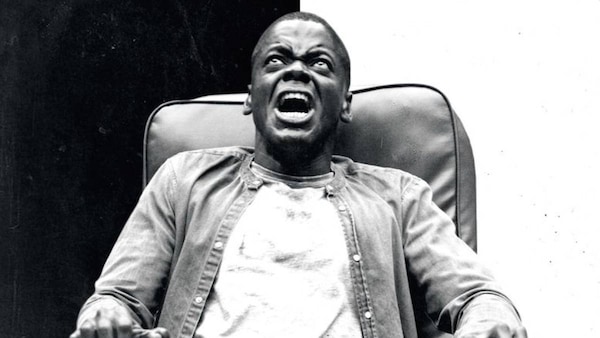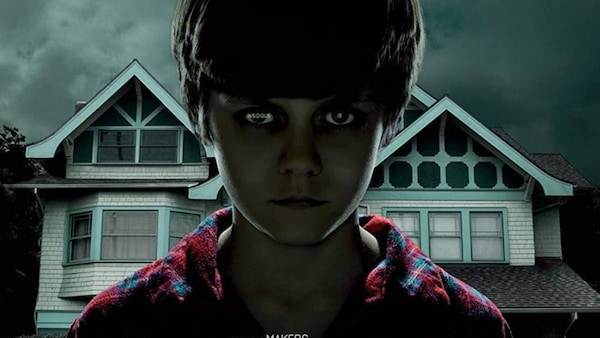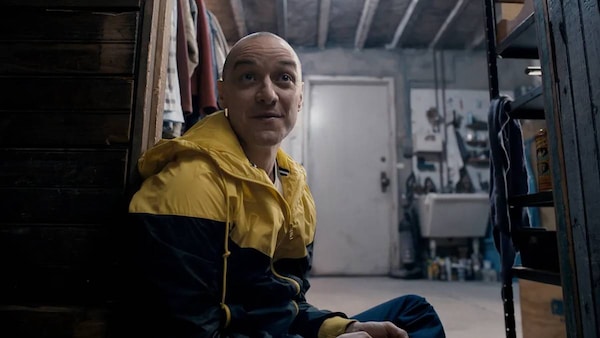Newsletter | Horror's Hall Of Fame: How Blumhouse Haunted Us All
This is #HouseOfHorrors, where Prahlad Srihari compiles the definitive guide on the modern production houses that comprise the genre's hall of fame.

Last Updated: 02.40 PM, Apr 13, 2023
This column was originally published as part of our newsletter The Daily Show on April 13, 2023. Subscribe here. (We're awesome about not spamming your inbox!)
***
This is OTTplay’s House Of Horrors, an 8-part guide to the eight contemporary production houses that have cemented their spots in the genre’s hall of fame. In part 1, we look at Blumhouse.
What is Blumhouse Productions?
Blumhouse Productions has established itself as a horror powerhouse in the last two decades, bolstered by a canny business model that allows the company to make up to six movies for what one episode of Stranger Things Season 4 roughly cost Netflix. Or in Marvel assembly line terms, what it costs to produce a single superhero extravaganza could produce 40 or more movies from modern horror masters like Jordan Peele, Mike Flanagan and Leigh Whannell.
What is Blumhouse known for?
Making low-budget, high-concept horror movies.
Scaring people senseless is more lucrative and less risky than assembling superheroes to save the multiverse — who would have thought? Well, Jason Blum did. On the heels of the viral success of The Blair Witch Project (a pioneering found-footage movie that earned nearly 1250 times its budget), Blum left Miramax to pursue a dream of producing low-budget horror movies in 2000. But success would prove elusive for seven years until he came across a movie shot on a $15,000 budget and set for a direct-to-DVD release. That movie was Oren Peli’s Paranormal Activity. After two years of shopping around, the movie got a wide release, went on to earn $194 million worldwide, and put Blumhouse on the map.
The resulting global recognition gave Blum the confidence to rewrite the producer playbook: spend responsibly ($5 million was the magic number for a while), promise directors creative freedom, team up with a leading theatrical distributor for a wide release, rinse and repeat. By sticking to this formula, not only has Blumhouse recouped costs quickly, it has achieved excellent profit margins.
Insidious was produced for $1.5 million and raked in over $100 million. Get Out was made on a budget of $4.5 million and earned $255 million in global receipts plus a well-deserved Oscar for Best Original Screenplay. The two Happy Death Days grossed over $190 million against a combined production budget of less than $14 million. The Purge franchise has been produced for a combined total of $53 million and has collected over $450 million so far.
Such an array of production credits on his CV has hallowed Blum in the halls of horror. Of course, signing a 10-year first-look deal with Universal played a considerable part in his success story. To avoid the tag of a one-trick pony, he also expanded the company’s portfolio beyond its preferred genre (with films like Whiplash, In a Valley of Violence and BlacKkKlansman) and medium (with episodic series like HBO’s Sharp Objects, Hulu’s Into the Dark and Netflix’s Ghoul).
Producing horror isn’t a game of chance but a game of competence. If you want to keep funding fresh voices who will define horror for generations to come, just being a keen appreciator of the genre isn’t enough. You also need to be a pragmatic businessman — and Blum has proven to be a rainmaker for horror. This is not to say Blumhouse has been on a hot streak ever since its inception. Not even close. Neither Paranormal Activity nor Insidious merited so many sequels. Let’s not even talk about Jessabelle, Truth or Dare, Ouija, Ma and dozens of other duds.

What are the hallmarks of Blumhouse's productions?
Even before a Blumhouse movie begins, the statement of artistic intent is clear. A bunch of horror tropes greet us in a CGI haunted house: a chair spins in the air, a door closes by itself, a book flings across the room, the ghost of a young girl walks by, the ceiling cracks and a lightbulb swings into view — all to the sounds of heartbeats growing quicker and pants growing louder. This was how you knew you were about to watch a Blumhouse movie. Until the intro was revised last year. Now we see Michael Myers peek out from behind a hedge before the camera keeps zooming back to reveal two girls wearing masks from The Purge, the teacup from Get Out, the cupcake from Happy Death Day, the Lipstick-Face Demon from Insidious, the camera from Paranormal Activity along with other Blumhouse Easter Eggs — a sign of a production company eager to play up its own legacy.
Blumhouse isn’t partial to any particular subgenre of horror. Over the years, the company has helped its filmmakers —
expand the creative possibilities of the found-footage conceit (Paranormal Activity, Creep, Unfriended, The Visit);
take a fresh stab at slashers (Happy Death Day, Freaky, Sick);
weaponise the reversal of home from a place of safety to a place of all sorts of insidious threats (Oculus, Sinister, and yes, Insidious);
and usher in a new wave of zeitgeist-conscious horror (from the well-considered allegories of Get Out to the blunt-force takedowns of The Purge movies).
Given the industry-wide addiction, the company has also invested in the remake and reboot business (Halloween, The Invisible Man, Black Christmas, Martyrs, and very soon The Exorcist).

A first look at Blumhouse’s canon will reveal a fascination with how technology has pushed our voyeuristic impulses into overdrive. Characters’ curiosity to look exposes them to all sorts of horrors as you would expect. But these impulses are tied to Blum’s love for found-footage. The faux-naturalism it affords can be mighty effective in the right hands. Found-footage horrors build via a slow-burn approach in Creep, take the form of Super-8 snuff films in Sinister and extend into the natural next stage with webcams, phones, and laptops in Unfriended, The Visit and Cam. First-time screenwriter Isa Mazzei based Cam on her own experiences as an online sex worker. The Daniel Goldhaber-directed film captures the digital hell of losing your online identity and bodily agency with it.
While modern horror movies tend to be jump-happy, ever so often, jump scares can work if placed well and staged imaginatively. Consider the collision with a deer that plays as a bad omen in Get Out or the family being run over by a lawnmower in Sinister.
Who are the directors Blumhouse has worked with?
The promise of creative freedom has attracted plenty of high-calibre talent to Blumhouse through the years. But helping launch the directorial career of Jordan Peele may end up becoming one of the studio’s greatest success stories. No one understands the infinite possibilities of genre filmmaking and knows how to Trojan Horse racial commentary into horror films better than Peele. Who knew one half of Key & Peele would go on to become one of the most exciting voices in horror today?
It is with Blumhouse’s backing that Mike Flanagan polished his skills as a horror filmmaker. If Oculus and Hush gave us samples of his original vision, Ouija: Origin of Evil confirmed he could work within a franchise sandbox.
Saw and Insidious screenwriter Leigh Whannell got his first shot at directing, thanks to Blumhouse. While his debut Insidious: Chapter 3 was a disappointment, the follow-ups Upgrade and The Invisible Man demonstrated his natural flair for horror filmmaking.
Christopher Landon transfused fresh blood into slashers, giving the classic Groundhog Day and body-swap premises a renewed comedic bite in Happy Death Day and Freaky respectively.
Besides backing upstarts, Blumhouse also relaunched the careers of seasoned directors who were slowly fading into oblivion after a string of flops. M Night Shyamalan made a comeback with The Visit followed by Split. Scott Derrickson got back in the saddle with Sinister and The Black Phone, while also giving Ethan Hawke a career reinvention.

Which are Blumhouse's defining horror movies?
Listed in order of release: Paranormal Activity (2009), Insidious (2011), Sinister (2012), The Purge (2014), The Visit (2015), The Purge: Election Year (2016), Split (2017), Get Out (2017), Happy Death Day (2017), Halloween (2018), Us (2019), The Invisible Man (2020), The Black Phone (2022)
Which are Blumhouse's (actual) best horror movies?
